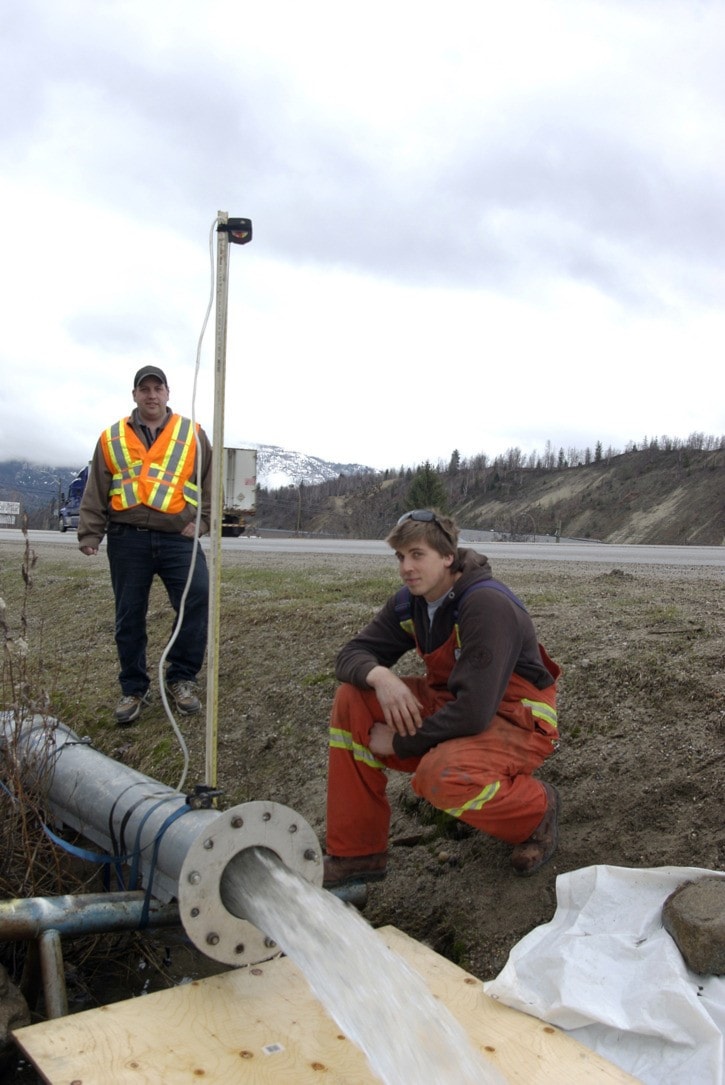The future of one of Trail’s major water sources will be determined over the next few months as testing for flow, capacity and ground water contamination got underway Tuesday.
The Bear Creek Well near the sewage treatment plant in Waneta has been in operation since 1981 and pumps water from an aquifer to Glenmerry, Waneta, and Green Gables reservoirs that service Shavers Bench, Miral Heights, Glenmerry and Waneta, about one-third of Trail’s water demands.
“Because this well is old we are testing it to see if it’s losing capacity which is normal for older wells so we will compare results from this test to the result we have in 2006,” said Genevieve Pomerleau, senior hydrogeologist for Golder Associates.
Precision Service and Pumps Inc. conducted the last test flows in 2006 and have been retained once again to conduct 10 hours of flow tests that will determine draw-down readings at various flow rates.
“The well is drilled 200 feet deep and there are screens at the bottom, so we do a draw-down test where you pump it and take the draw-down reading and that will tell you how efficient the well is, then we take that data and put it against what it was in 1981 and see if it’s dropped in production,” said Precision technician Shane Closson.
The seven-metre screens on the 30-year-old well can become blocked through mineralization or other debris, which hamper flows.
To meet the demands of maximum use, the tests will gauge recovery time as well as flows so technicians can determine whether the well simply needs rehabilitation or the city needs to drill a new one.
“In 2006, we assessed it (the screen) and it didn’t look like it needed cleaning but with this whole ground-water management plan, the first step is to determine the well capacity and if we’re going to protect this area, is this going to be our source of water?” said city engineering technician John Howse.
Tuesday’s test flows began at 1,700 gallons per minute, increasing to 2,000 gallons per minute for eight hours. The last 30 minutes of the test will see flows of 2,500 gallons per minute to see if the well can meet peak demand, said Trail’s utilities superintendent Chris McIsaac.
“Our 2006 tests results were extremely good. Our recovery time is 80 per cent within five minutes of the 60 per cent draw down – which means our recovery time is really fast,” added McIsaac.
In addition to capacity, the city is also looking at the effects of ground water on the aquifer and how it influences potable water.
“We don’t know how ground water affects the water quality down below, so after all this, if we figure this is our well for the next 15 or 20 years, we’ll have to do well monitoring to see how ground water affects well water,” said Howse. “But this well recovers so quickly, any potential contaminants are flushed out very quickly . . . A lot of municipalities would die for this sort of water source.”
Once Golder completes its report on the tests, the city will determine whether to rehabilitate the well or begin drilling test wells.
